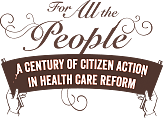Education Higher Education
Health Care Reform and History
Class 5: Health Care in Crisis
Introduction:
In 1965, it seemed possible that private insurance, Medicare, and Medicaid together would create a sufficient substitute for universal health insurance. However, this dream crumbled when the economic changes of the 1970s and ‘80s, including medical cost inflation and the decline of labor unions, led many firms to reduce or cancel health coverage for their employees. By 1990, 37 million Americans had no health insurance, and the election of 1992 became a contest over how to address the health care crisis. President Bill Clinton proposed an ambitious system of universal coverage based on the concept of “managed competition,” but this plan was once again defeated. This time, the President’s main opponent was not the medical profession, but the powerful American insurance industry.
Class Resources
Primary Sources
- “The Crisis in Health Insurance.” Consumer Reports Vol. 55, No. 8 (August 1990): 533–49.
- Bill Clinton, “Address on Health Care Reform,” September 22, 1993
https://millercenter.org/the-presidency/presidential-speeches/september-22-1993-address-health-care-reform. - Political cartoons on Clinton reform. Skocpol, Theda. Boomerang: Health Care Reform and the Turn Against Government. New York: W.W. Norton & Co., 1997, 58, 144, 149, 150, 151, 162.
Secondary Sources
- Starr, Paul. “The Shaping of the Clinton Health Plan, 1991–1993” and “Getting to No, 1994.” In Remedy and Reaction: The Peculiar American Struggle Over Health Care Reform. New Haven: Yale University Press, 2011, pp. 79–129.
Discussion Questions:
- What led the media and politicians to declare that the U.S. health care system was “in crisis” by 1990? What problems were Americans experiencing with their health care?
- How did the Clinton health plan differ from that proposed by Harry Truman? What explains the change in health care reform proposals between 1948 and 1993?
- Why did the Clinton plan fail? Discuss the role of interest group lobbying and other factors in the fate of the 1993 health reform effort.


